
Examples of Prequantum Field Theories II: Higher Gauge Fields
/
1 Comment
After having recalled ordinary gauge fields from a dg-algebraic perspective in the previous article, here I discuss…
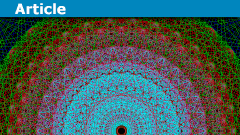
Examples of Prequantum Field Theories I: Gauge Fields
After having motivated the need for prequantum field theory and having laid out its principles (i. extremal action, ii. global…

Fun with Self-Avoiding Walks Simulations
This post is about some simulations I did of self-avoiding random walks. These are what they sound like with each step, the position of the walk moves…

Higher Prequantum Geometry V: The Local Observables – Lie Theoretically
This article discusses how the previous considerations naturally follow the concepts of local observables of local field theories and of…

Higher Prequantum Geometry IV: The Covariant Phase Space – Transgressively
The Euler-Lagrange ##p##-gerbes discussed in the previous article are singled out as being exactly the right coherent refinement…

Higher Prequantum Geometry III: The Global Action Functional – Cohomologically
The previous article ended with the concept of classical locally variational field theories, of which a class of examples are…

A Poor Man’s CMB Primer: Bumps on a Blackbody
Astronomers Arno Penzias and Robert Wilson discovered the cosmic microwave background in 1965. They were not looking for it.They were…

Higher Prequantum Geometry II: The Principle of Extremal Action – Comonadically
The previous article motivated the importance of considering "pre-quantum field theory" in-between classical and quantum field…

Learn Time Dilation and Redshift for a Static Black Hole
The following is an overview of the time dilation and gravitational redshift effects of a static (Schwarzschild) black hole. By general relativity, a strong…

Higher Prequantum Geometry I: The Need for Prequantum Geometry
Before proceeding with a discussion of the super p-brane sigma models, whose emergence from the superpoint I discussed in the previous article,…

Can We See an Atom?
In this article, I will discuss how these images of atoms are made, what exactly we are looking at, and what it means to see an atom. Over the decades…
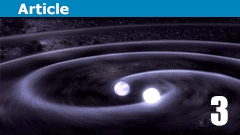
Does Gravity Gravitate: The Wave
In the first two posts in this series, we looked at different ways of interpreting the question "does gravity gravitate?" We left off at…

Does Gravity Gravitate? Part 2
In the first post of this series, I talked about two ways to answer the title question, one leading to the answer "no" and the other leading…
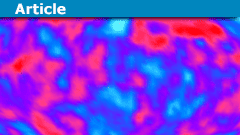
A Poor Man’s CMB Primer: The Birth of a Cosmic Background Radiation
The early universe was hot. So hot that nuclei boiled. The great thermal energy of the universe overwhelmed the confining efforts of the…

Understand the Acoustic Modulation vs. Beating Confusion
A long time ago I read a paper in the IEEEProceedings recounting the history of the superheterodyne receiver. Overall it was a very interesting and informative…

Learn Inflation Balloon Analogy Misconceptions
The Balloon Analogy is a simple-minded way to help describe (but not completely describe) two facts of cosmology that are difficult for many people to…

Struggles With the Continuum: Point Particles and the Electromagnetic Field
In these posts, we're seeing how our favorite theories of physics deal with the idea that space and time are a continuum, with points described…

Explosion-Generated Collapsing Vacuum Bubbles Reach 20,000 Kelvin
Key PointsJérôme Duplat and Emmanuel Villermaux published a paper in Physical Review Letters (PRL) to generate centimeter-sized vacuum bubbles…

A Poor Man’s CMB Primer: Orientation of the Universe
This is a picture of the cosmic microwave background:Fig 1. The cosmic microwave background as seen by the European Space Agency's…

What Planck Length Is and It’s Common Misconceptions
The Planck length is an extremely small distance constructed from physical constants. Many misconceptions generally overstate its physical significance,…
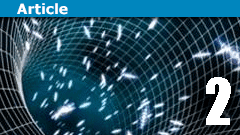
Struggles With The Continuum: Quantum Mechanics of Charged Particles
Last time we saw that nobody yet knows if Newtonian gravity, applied to point particles, truly succeeds in predicting the future. To be precise:…

Exploring a Paper on Scaling Laws and the Speed of Animals
Key PointsScaling arguments are powerful tools in physics between vague descriptive arguments and rigorous formulae.
Examples of scaling arguments…

Learn the Top 5 Misconceptions About Infinity
Introduction
Understanding the behavior of infinity is one of the major accomplishments of mathematics. Sadly, the infinite is often misunderstood and…

Last Man On The Moon | Look Back at Previous Missions
On December 11, 1972, astronaut Eugene Cernan became the last person to walk on the lunar surface, marking the conclusion of NASA's Apollo missions—a…

Struggles With the Continuum: Is Spacetime Really a Continuum?
Is spacetime really a continuum? That is, can points of spacetime really be described---at least locally---by lists of four real numbers…

“Violating” Einstein’s Photoelectric Effect Model
One of the most spectacular theoretical descriptions that Einstein had ever produced is the corpuscular nature of light that he used in his 1905 photoelectric…

Inflationary Misconceptions and the Basics of Cosmological Horizons
Introduction
It is a common saying that during inflation "space expanded faster than the speed of light." This statement is meant to articulate the…

What Happens When You Flip the Light Switch: From Zero Seconds to 20 Years
Introduction
Few people know what happens when a customer does something like flipping a light switch. The full explanation requires descriptions of topics…

Learn the Relativistic Work-Kinetic Energy Theorem
I was bothered for a long time by the reasons for the relativistic validity of the work-kinetic energy relation ##\Delta E=Fd##, which holds without any…

Emergence From the Superpoint
In the previous article we saw that the generalization of super-Lie algebras to homotopy super-Lie n-algebras (super L-infinity algebras)…

Homotopy Lie-n Algebras in Supergravity
The previous article in this series claimed that the mathematics of the 21st century that had fallen into the 1970s in the form of string…

It Was 20 Years Ago Today — the M-theory Conjecture
While the world didn't end, after all, 15 years back at the turn of the millennium, in hindsight it is curious that, almost unnoticed,…

Learn a Misconception of the Heisenberg Uncertainty Principle
One of the common misconceptions about the Heisenberg Uncertainty Principle (HUP) is that it is the fault of our measurement accuracy.A description…

Plus/minus What? How to Interpret Error Bars
People sometimes find themselves staring at a number with a ± in it when a new physics result is presented. But what does it mean? This Insight aims to…

Approximate LCDM Expansion in Simplified Math (Part 4)
Part 4: Cosmic Recession Rates
An astronomer, accompanied by his amateur relativist friend, aimed a telescope at a distant galaxy and measured…

The LCDM Cosmological Model in Simplified Math (Part 3)
Part 3: Important Cosmological Horizons and Distances
A question that often comes up is: "how big is the observable universe?"The question…

Approximate LCDM Expansion in Simplified Math (Part 2)
Part 2: Time and Distance
In Part 1 we have seen how one of the simplest ways of expressing the fractional expansion rate of the universe,…

Learn About Neutrino Masses and Speed
It was hard to miss the 2011 OPERA neutrino speed measurement that indicated superluminal neutrino speeds (and turned out to be a measurement error), but…

Understanding the General Relativity View of Gravity on Earth
Often students have difficulty reconciling the General Relativity (GR) view of gravity versus their own experience with gravity on the surface of Earth.…

Approximate LCDM Expansion in Simplified Math
If we restrict ourselves to a spatially flat LCDM universe model (and ignore the early radiation energy density), the first Friedmann equation…

Should You Do Science for Love or for Money
When I look over the most highly cited papers and my favorite accomplishments, I am struck by the fact that most of the projects were not funded by…

Can You Measure Quantum Entanglement?
Though any pair of particles, given their history, might happen to be entangled, some pairs are more entangled than others.Since at least the 1990s,…

Garrett Lisi’s Superparticle Bet With Frank Wilczek
There is an interesting story unfolding in particle physics. The main motivation for building the Large Hadron Collider was to search for new particles.…

Some Useful Integrals In Quantum Field Theory
In my paper on renormalisation I mentioned what most who have studied calculations in Quantum Field Theory find, it's rather complicated and mind-numbing.…

Retrocausality: How Fundamental is the Arrow of Time?
In this Insight, I'll discuss a recent experiment ([1] [2] [3]) by some Australian physicists that has brought a thought experiment into the real world…

How to Initiate Research Work As a Physics Major
It has been a while since the last installment of this series, so let’s recap on where you are right now. You should already…

Reversible vs Irreversible Gas Compression and Expansion Work
Introduction
In learning Thermodynamics, one of the difficult concepts that many students struggle with is the difference between reversible and irreversible…

Introduction to Causal Perturbation Theory
Relativistic quantum field theory is notorious for the occurrence of divergent expressions that must be renormalized by recipes that on first sight sound…

Weak Values Part 2: The Quantum Cheshire Cat Experiment
In a previous Insight, Weak Values Part 1: "Asking Photons Where They Have Been," I showed different methods for computing the relative intensities in…

Weak Values Part 1: Asking Photons Where They Have Been
In a previous Insight on retrocausality, I explained an experiment by Danan, Farfurnik, Bar-Ad, and Vaidman (DFBV)[1], “Asking Photons Where They Have…
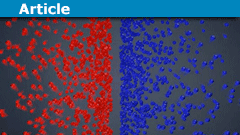
What are Negative Absolute Temperatures
It's a famous result in thermodynamics that you can't reach absolute zero no matter how hard you try. Also, the definition of absolute zero makes it obvious…

A Definition and Controversy of Energy
Energy SummaryThe article addresses the fundamental question, "What is energy?" and explores why discussions about energy can be challenging.
It…

LHC Part 3: Protons as Large as a Barn
Introduction
See also part 1 and part 2 of the series.The LHC commissioning phase is coming to and end. On Wednesday May 20th 2015, the first collisions…

How to Scientifically Measure How Many Days Are in a Year
Days in a Year SummaryThe article explores the measurement of the number of days in a year, considering various definitions of a "day" and a "year."
…

Learn About the Greenberger-Horne-Zeilinger Experiment
In two previous Insights, I shared Mermin's explanation of the Hardy experiment[1] and the Mermin device[2]. Both of his corresponding AJP papers…

The Quantum Liar Experiment: An Instantiation of the Mermin Device
In 1981, Mermin published a paper[1], "Bringing home the atomic world: Quantum mysteries for anybody" in which he explained the mystery of quantum nonlocality[2]…

Explore Some Sins in Physics Didactics
Introduction
There are many sins in physics didactics. Usually, they occur, because teachers, professors, textbook or popular-science-book writers, etc.…

LHC Part 2: Commissioning
Introduction
Last month, I wrote a FAQ about working at the LHC, at the time the first beams were circulating in the machine after a stop of two years.…

What are the Fates of Massive Stars
Star Fate Key PointsStars are born in primordial nebulae, gaseous molecular clouds on the spiral arms of galaxies
Stars smaller than 1.4 suns…

Learn the Physics of Hand-to-Hand Combat
Physics of Hand-to-Hand Combat Key PointsMartial arts effectively use principles of physics to achieve goals quickly and forcefully.
Athletic…
